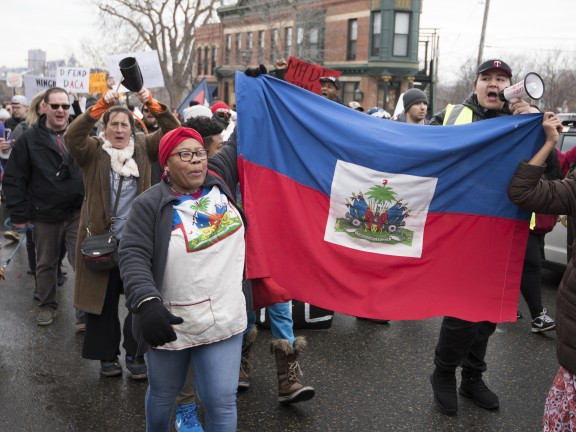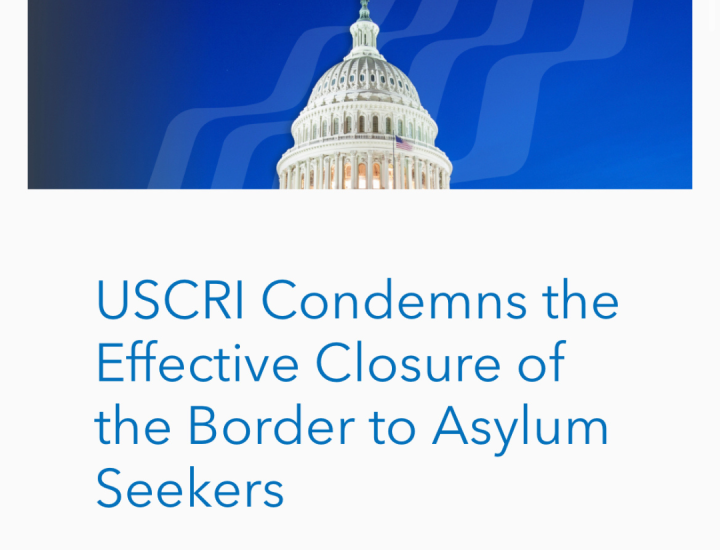Black History Month: What does it mean to say “Immigration is a Black Issue”?

“If Black people are free, we all are free – and that includes Black immigrants.”
“Immigration is a Black issue” is the motto of the UndocuBlack network, an organization of currently and formerly undocumented people that lifts up the stories of Black immigrants to fight for collective liberation. As a phrase, it seeks to remedy the erasure of Black immigrants and focuses a spotlight on anti-Black racism in our immigration and criminal legal systems. To learn more, check out the recording of the American Immigration Lawyers Association (AILA) conversation launching Black History Month 2023. But the phrase should resonate long after the end of February.
How does border policy affect Black immigrants?
People who arrive at the U.S. border and ask for protection have a right to seek asylum in the United States. However, in the last several years under both President Trump and President Biden, we have seen the implementation of policies that disrupt access to asylum. Since 2020, the U.S. has used a provision of the health code to “expel” asylum seekers to Mexico or to their home countries. These policies harm all asylum seekers, but many have called out their disproportionate impact on Black migrants. For example, images of Haitian asylum seekers at Del Rio, Texas being corralled by Border Patrol agents on horseback went viral because they seemed to echo centuries of abuse of Black people. And the scale of expulsion flights to Haiti, even when conditions in Haiti were dire, appeared to reflect a long and ongoing history of anti-Black racism in the United States’ treatment of Haitian refugees.
How does language access affect Black immigrants?
Everyone should have access to vital information in the language they understand, and language access is a basic civil right. In the context of the immigration system, it can be a matter of life and death. For people who do not speak English or Spanish — especially Black and Indigenous people — it can be difficult to access legal representation and other services. For example, when the Biden administration recently implemented a mobile app called CBP One for those seeking admission to the United States, they neglected to include Haitian Creole as an available language — meaning that Haitians did not have the same access to the United States as others. (Haitian Creole has since been added.)
What about detention and deportation?
Data shows that Black and African immigrants often face longer periods of detention and higher bail amounts. As BAJI reports, “like African-Americans, Black immigrants experience disparate, often negative, outcomes within various social and economic structures in the U.S., including the country’s mass criminalization and immigration enforcement regimes.” Black immigrants are more likely to be detained and deported for criminal convictions than the immigrant population overall.
What is the history of Black immigration, and how many Black immigrants live in the United States today?
It is important to recognize how U.S. history has worked to make Black immigrants invisible. From the earliest laws governing migration and citizenship, the U.S. understood “immigrants” to mean primarily white people from Europe. The first naturalization law specified that “free white persons” could become U.S. citizens. Most major immigration laws reinforced this idea, from the Chinese exclusion acts of the 1880s to the national origins quotas of the 1920s. And while enslaved African people were forcibly brought to the Americas including the United States, they were not understood to be immigrants.
However, Black immigration has a long history. Cape Verdean immigration to the United States began in the early 19th century. West Indian immigrants grew significantly in the late 19th and early 20th centuries; some 100,000 Black immigrants from the Caribbean lived in the United States by 1930. During World War II, the United States recruited workers from the Americas (most famously through the Bracero Program with Mexico), including from the Bahamas, Jamaica, and Barbados. In Philadelphia during the war, NSC extended services and fostered social life and activities for the Jamaican guest workers residing in the city. After the 1965 Immigration Act ended earlier, explicitly racist restrictions on immigration from around the world, the number of Black immigrants increased. Some African immigrants came as students and professionals. After the passage of the Refugee Act of 1980, there were more opportunities for African immigrants to come as refugees and asylum seekers. The Immigration Act of 1990 created a program called the Diversity Visa Lottery which has significantly increased the number of African immigrants living in the United States.
Today a tenth of the Black U.S. population is made up of immigrants — more than 4.6 million people. Most Black immigrants are from the Caribbean, but the number of Black immigrants from Africa has more than tripled since the year 2000.
What are some of the organizations focused on Black immigration issues?
Some of the key national organizations serving Black immigrant communities include UndocuBlack, Haitian Bridge Alliance, Black Alliance for Just Immigration (BAJI), and African Communities Together. In Philadelphia, some important organizations include ACANA (African Cultural Alliance of North America), African Family Health Organization (AFAHO), and Africom. NSC is proud to work in partnership with these groups.
What role can organizations like NSC play in advocating for Black immigrants?
Focusing on anti-Black racism in the immigration system helps us better understand the oppression and challenges faced by all immigrants — and the systems of poverty and injustice that afflict Black Americans as well. As Ronald Claude, Director of Policy & Advocacy for BAJI, said in the recent AILA discussion, “If Black people are free, we all are free – and that includes Black immigrants.”

